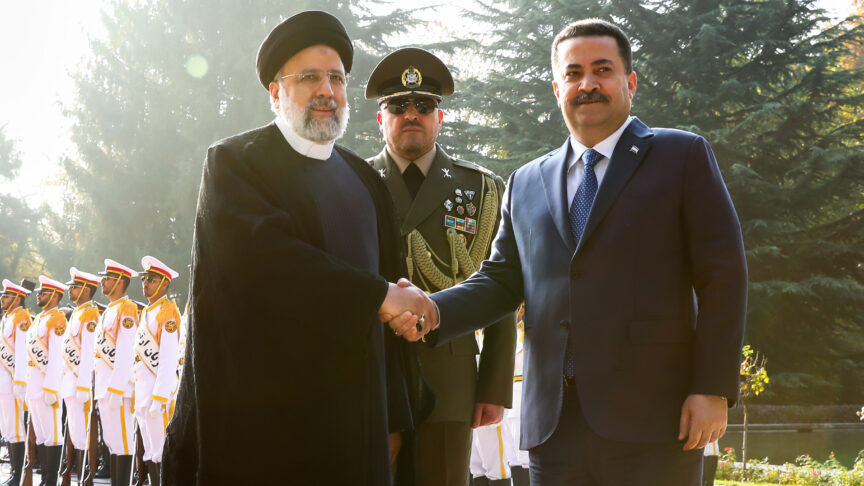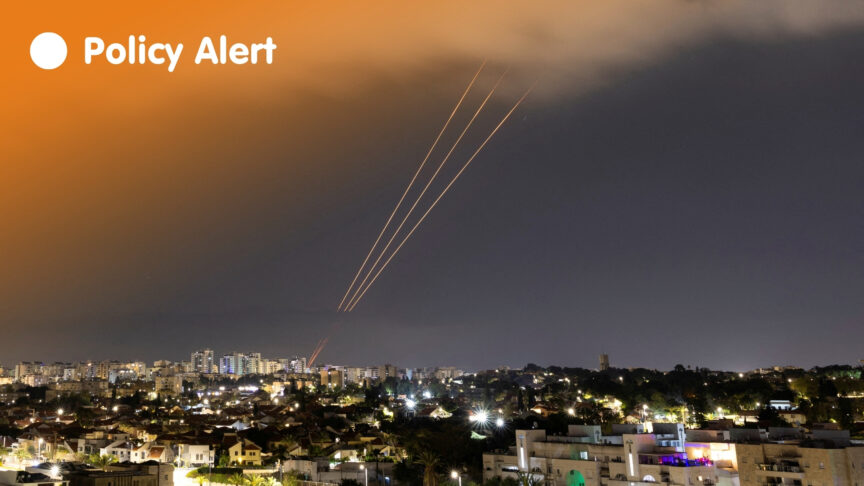US must avoid a war with Iran in eastern Syria
Some in Washington hope the US can cut off Iran’s regional influence in eastern Syria, but that’s a recipe for endless war.
In recent weeks, a new battle front has come into sight in Syria. The Islamic State-held eastern desert, border with Iraq and Deir Ezzor city, a zone long neglected as warring parties concentrated on the populated western axis, is now emerging as a broader strategic front pitting the Syrian regime and Iranian backed militias against the US military. Direct clashes have already occurred on three separate occasions.
In part this confrontation revolves around Tehran’s perceived attempts to secure a land corridor running from Iran across to the Mediterranean. Some in Washington are hoping that the US, under a new administration increasingly focused on rolling back Iran’s regional influence, can lay claim to eastern Syria as a means of cutting off this route.
Already, however, Iran has seized the initiative, looping around a US military base located on the Syrian-Jordanian border at al-Tanf, to secure direct access to the Syrian-Iraqi border further north.
If the US wants to invest more meaningfully in Syria, it should be encouraged to do so in southern and northern non-regime zones rather than letting wider geo-political ambitions draw it eastwards.
Against this backdrop, European states should press the Trump administration that appears to still be shaping its strategy in this arena to focus its resources elsewhere. A fight against Iranian proxies in eastern Syria is likely doomed to failure and would distract attention away from other important areas of the country.
It also runs the risk of provoking a broader US-Iranian conflagration that would significantly set back any efforts to defeat the Islamic State (IS) and secure some form of peace not just in Syria, but also in neighbouring Iraq.
If the US wants to invest more meaningfully in Syria, it should be encouraged to do so in southern and northern non-regime zones rather than letting wider geo-political ambitions draw it eastwards.
As the regime has consolidated control over the inhabited areas of Syria in recent months, particularly in terms of largely ending the fight for Damascus and Aleppo, it has quickly turned its attention to this arena.
For Assad, control of the economically-important east is aimed at preventing a continuous north-south opposition-controlled zone, viewed as the prelude to a more debilitating carve up of the country and long term strategic threat.
Assad’s key backer, Iran, meanwhile, appears to see control of the Syrian-Iraq border region as important to securing a direct land route from Tehran across to the Mediterranean.
This position has grown more pronounced given the Trump administration’s hardening anti-Iran stance. Assad and his backers have grown fearful that the US is formulating plans for the east through a combined southerly push by Kurdish-led Syrian Democratic Forces (SDF) and a northwards advance by Arab opposition forces from Jordan.
Yet while Washington has broadly adopted a more anti-Iranian stance, the Trump administration appears to still be hesitant about its strategy here. Over recent weeks pro-regime militias have come under US fire near al-Tanf but the US military has made clear that these strikes are about force protection rather than opening up a broader front.
A US-supported push into eastern Syria will almost certainly end in failure given the regime and Iran’s commitment to securing the area.
Moreover the US military made no attempt to stop these same forces looping around it to secure control of the border north of al-Tanf. While US forces have allegedly now advanced slightly northeast of al-Tanf, establishing by some accounts a new operating base at al-Zakf, and have also moved a new rockets system into the area, they have not taken significant steps to stop the advance of regime affiliated forces.
If true, this is a wise move and one that Europeans should be strongly encouraging. A US-supported push into eastern Syria will almost certainly end in failure given the regime and Iran’s commitment to securing the area.
Any advance by Western-affiliated forces will find itself surrounded on both sides by Iranian proxies determined to spoil any stabilising plan and who will almost certainly outlast, in blood and time, a Western presence or agenda.
The US is highly unlikely to commit the necessary resources to give this any chance of long term success, including in terms of training up a viable local force as repeated failures on this front have demonstrated.
In effect, this is a recipe for endless war in the east, one that could well ignite a wider geo-political confrontation, pushing the US and Iran into direct conflict with a risk that it spills over into Iraq and draws in Russia.
Significantly, this battle would also distract from more attainable goals. Rather than investing in a military fight in the east, US and European governments should now be prioritising resources to ensure the success and stability of non-regime controlled areas in the south and north of the country, including in terms of advancing critical post-IS stabilisation efforts in Raqqa.
In this vein, the al-Tanf base and associated opposition troops could be used to shore up the opposition controlled zones along the Jordanian and Israeli borders. Some recent reports have suggested a Russian proposal to divide influence between a US-backed southern zone and a Russian-backed eastern zone and this may represent a smart way forward.
Combatting IS in Deir Ezzor remains important. But with an existing regime military presence in the city – protecting a civilian population of around 100,000 now under siege by IS – it would make more sense to let the regime manage this front in combination with Russia.
This could be seen as irresponsible given Assad’s brutal tactics, but the existing regime foothold in the city, the lack of a strong opposition armed presence and expanding regime links with tribal networks should facilitate a softer approach than it has employed elsewhere in the country.
In contrast, injecting a wider geo-political rivalry into the mix, in terms of the Iranian-US struggle for influence, will only complicate the fight and give IS greater room to exploit.
This article was originally published by the Middle East Eye on 16 June.
The European Council on Foreign Relations does not take collective positions. ECFR publications only represent the views of their individual authors.


